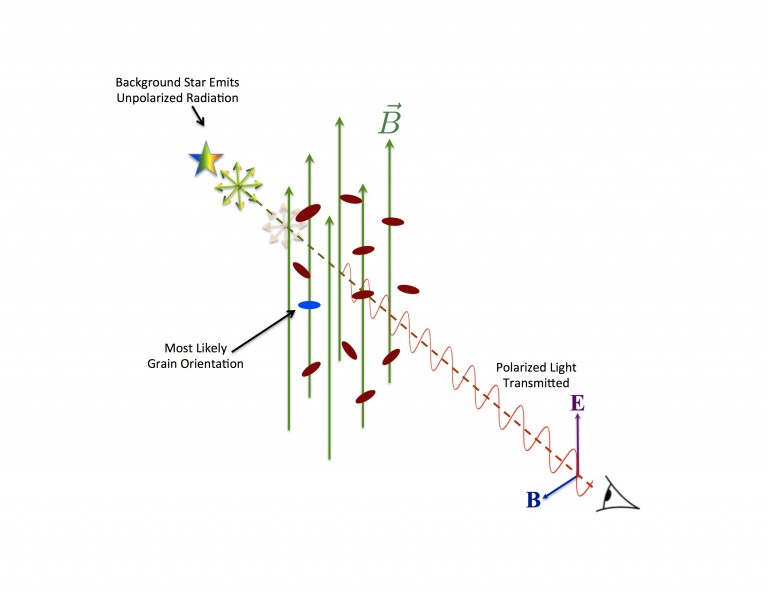Starlight reaches us after having traveled through the magnetized, dusty Inter-stellar Medium (ISM). On its journey, starlight interacts with the interstellar dust. Part of the light becomes absorbed by the dust grains. Because the grains are asymmetric and elongated, they preferentially absorb light along their long axis. This causes the light to become polarized along the short axis of the grain. As dust grains are aligned with their short axis along the direction of the local magnetic field, the starlight's polarization is also parallel to the magnetic field.
The light that is absorbed by the dust grains is not lost: it heats the grains and is re-emitted as thermal (black-body) radiation. In emission, light emerges preferentially along the long axis of the dust grains. So the polarization of the thermal dust emission is perpendicular to the magnetic field.
The typical temperature of dust grains is very cold: around 20 K, which is close to the temperature of the CMB. As a result, dust radiates in the far-IR, the part of the spectrum that is occupied by the CMB. We receive both types of radiation combined and must find ways to separate the two contributions.
Part of the difficulty in this separation, comes from the complexity of the ISM. Both the dust populations and magnetic field orientations vary throughout the Galaxy in ways that are currently unknown and difficult to predict with existing knowledge. PASIPHAE's goal is to fill this gap by measuring the magnetic field orientation in 3D.
Tomography
Stars in a small region of the sky lie at different distances from us. Each star's light is affected only by ISM dust that is between it and the Earth. By measuring the polarization of many stars in the same region of the sky (at known distances), we can work out how the polarization changes with distance. We can then infer the magnetic field orientation along the line-of-sight dimension. Distances to stars are currently being measured with ESA's Gaia mission. Combining this information with PASIPHAE's polarization measurements, will enable us to create a 3D map of the ISM magnetic field orientation.










